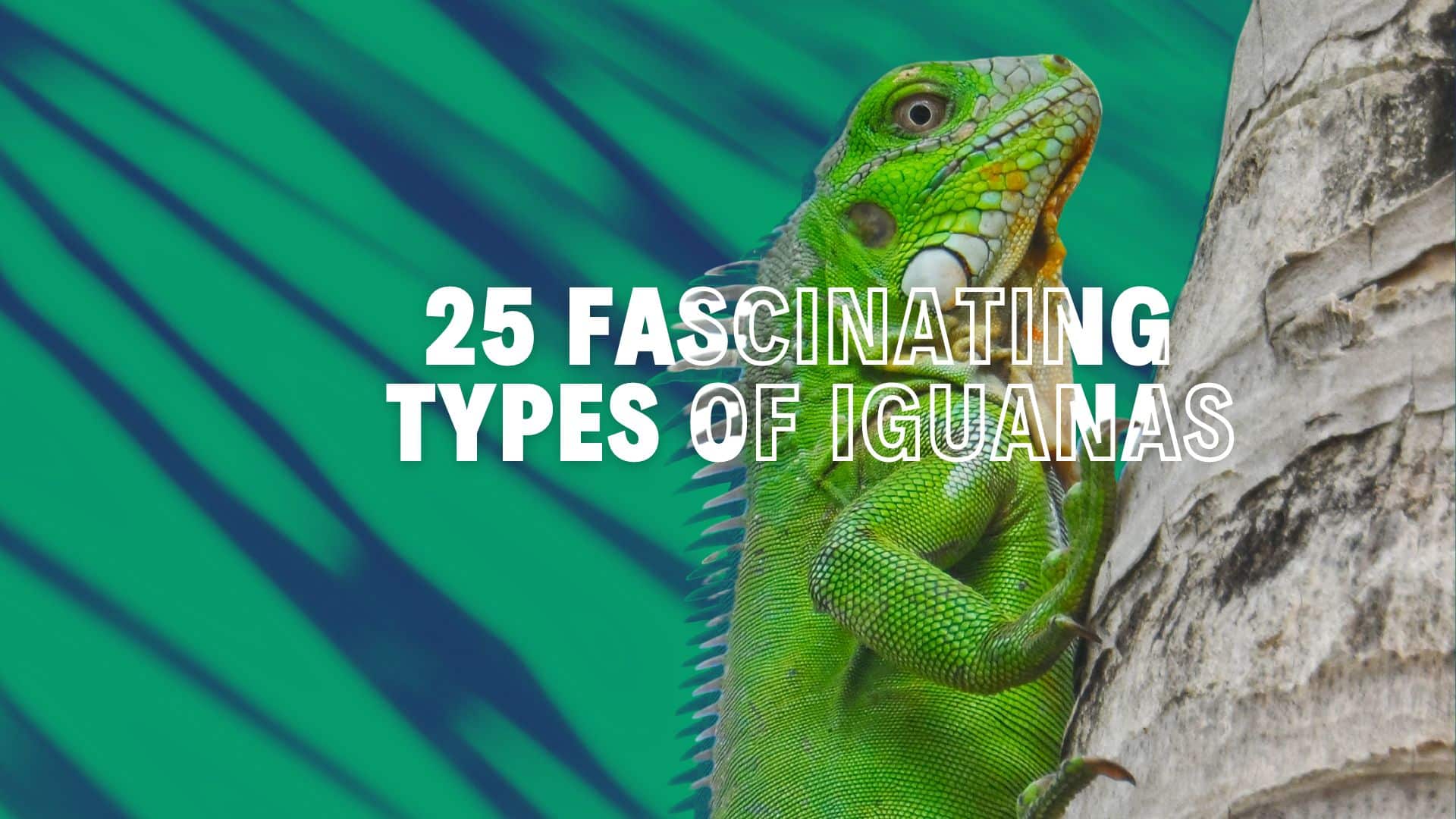
Iguanas are fascinating reptiles in various habitats across the Americas and the Caribbean.
With their unique adaptations and striking appearances, iguanas have become popular in the wild and as pets.
From the well-known Green Iguana to the rare Santa Lucia Iguana, each species has its own distinctive characteristics and ecological role.
This blog will explore 25 types of iguanas, highlighting their key features, habitats, and behaviors.
List of Different Types of Iguanas
1. Green Iguana
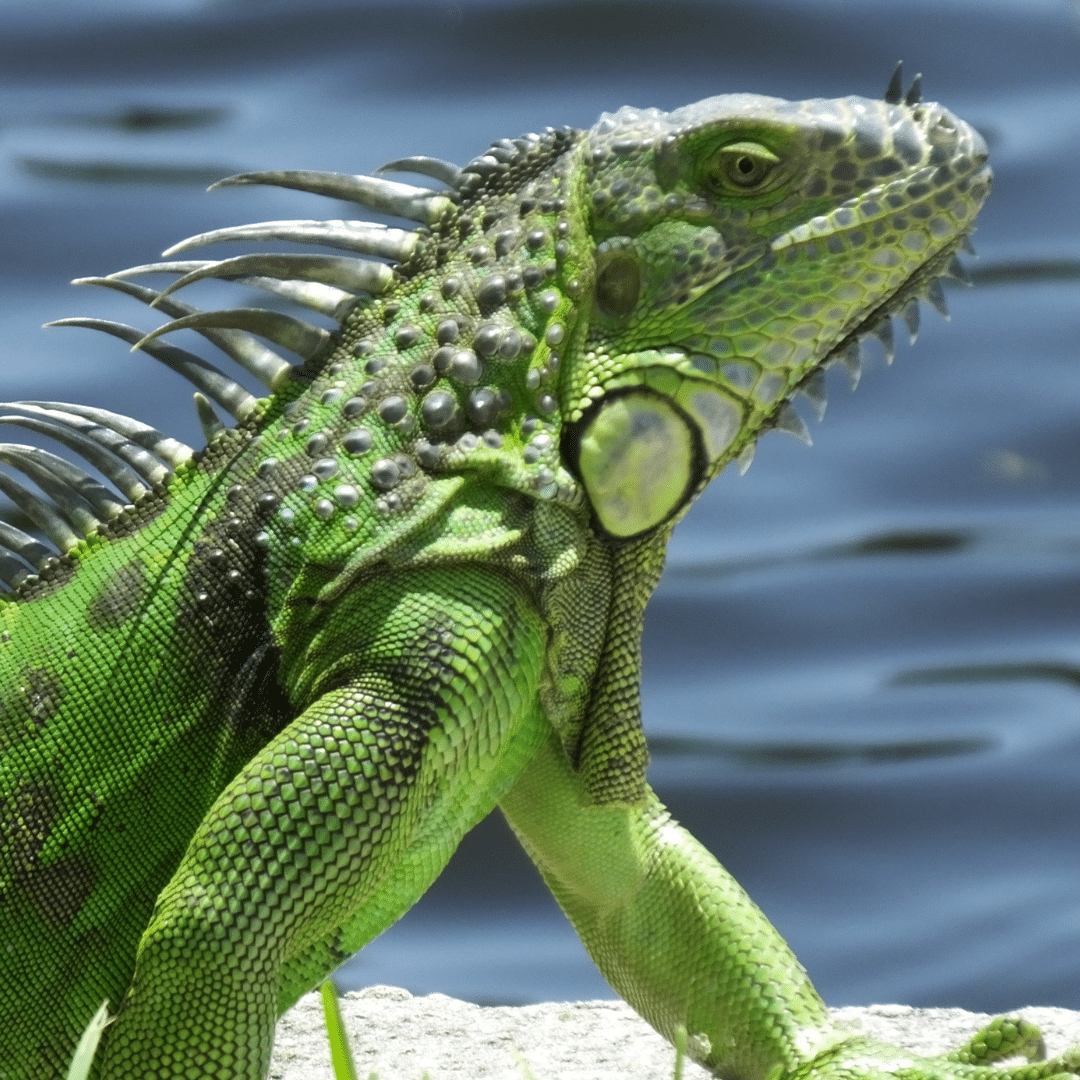
The Green Iguana is the most commonly known and widespread species of iguana.
Native to Central and South America, these iguanas are known for their vibrant green color and large size, often reaching up to 6 feet long.
They are primarily arboreal, spending most of their time in trees. Green Iguanas are herbivores, feeding on leaves, flowers, and fruit.
- Color: Bright green
- Habitat: Tropical rainforests
- Diet: Herbivorous, primarily leaves and fruit
2. Red Iguana
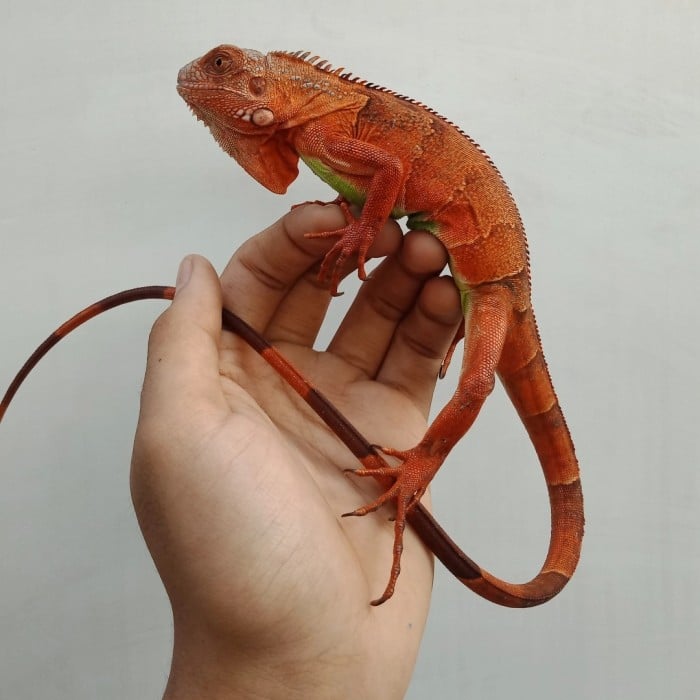
Red Iguanas are a color morph of the Green Iguana, known for their striking red or orange hues.
These iguanas are similar in behavior and habitat to their green counterparts but are distinguished by their unique coloration.
They are often found in the same regions as Green Iguanas and exhibit similar dietary habits.
- Color: Red or orange
- Habitat: Tropical rainforests, similar to Green Iguanas
- Diet: Herbivorous, primarily leaves and fruit
3. Blue Iguana

The Blue Iguana, also known as the Grand Cayman Blue Iguana, is native to the island of Grand Cayman.
These iguanas are critically endangered due to habitat loss and predation.
They are known for their stunning blue coloration and large size, making them one of the most visually striking iguana species.
- Color: Bright blue
- Habitat: Rocky, dry forests of Grand Cayman
- Diet: Herbivorous, eating leaves, flowers, and fruits
4. Desert Iguana
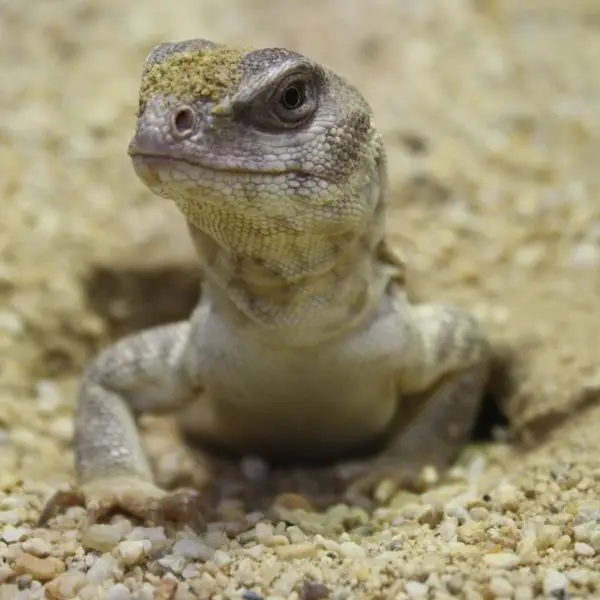
The Desert Iguana is well adapted to life in arid environments, primarily found in the southwestern United States and northern Mexico.
These iguanas are smaller than other species and have a light brown or grayish color that helps them blend into their desert surroundings.
They are active during the day and feed on desert vegetation.
- Color: Light brown or grayish
- Habitat: Deserts, arid regions
- Diet: Herbivorous, feeding on desert plants and flowers
5. Fiji Banded Iguana
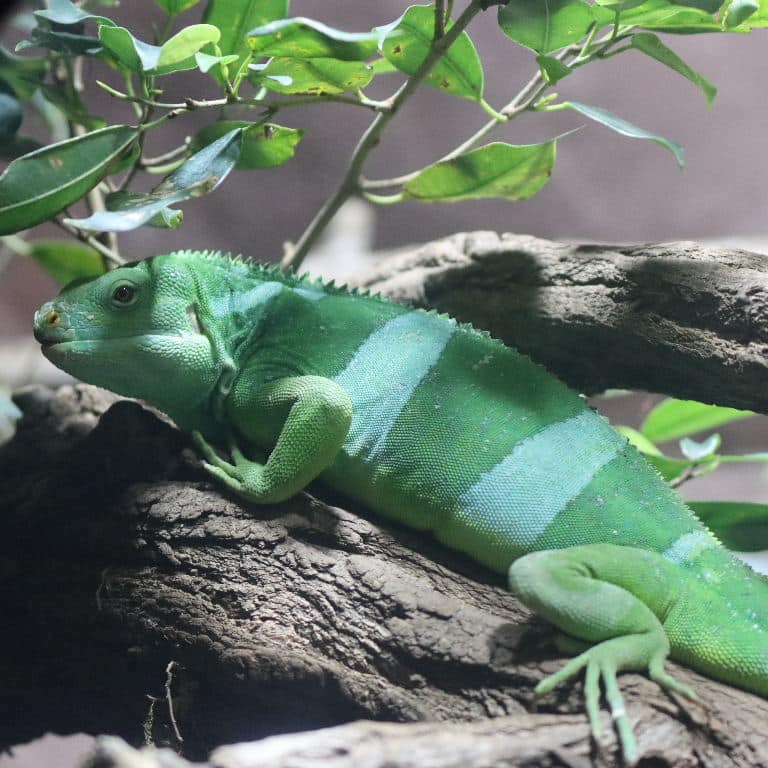
The Fiji Banded Iguana is a vibrant species native to the islands of Fiji.
Known for their striking green color with white or pale blue bands, these arboreal iguanas prefer humid, forested environments.
They are an endangered species primarily due to habitat destruction.
- Color: Green with white or pale blue bands
- Habitat: Humid forests of Fiji
- Diet: Herbivorous, eating leaves, fruits, and flowers
6. Galápagos Land Iguana
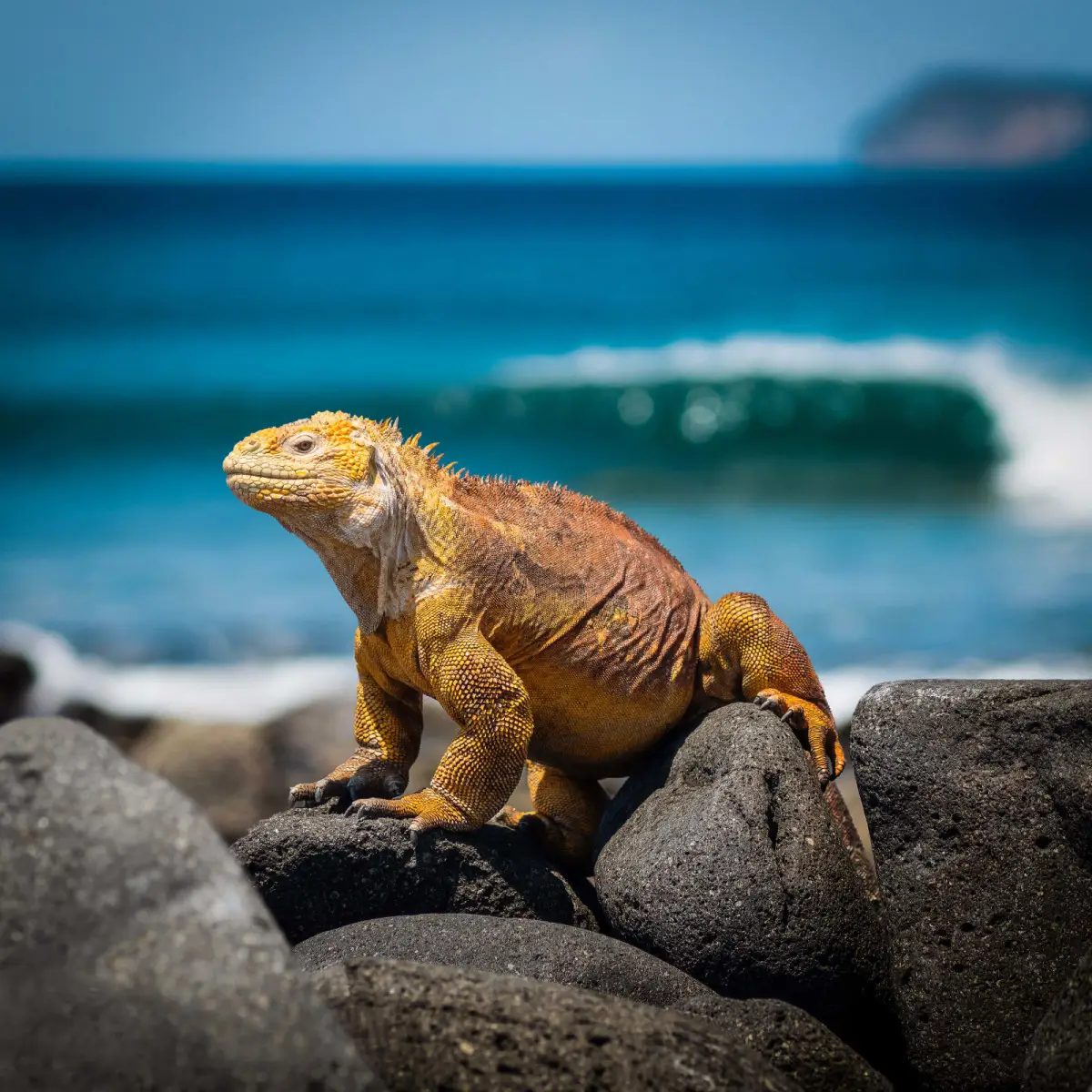
The Galápagos Land Iguana is native to the Galápagos Islands and is known for its yellowish coloration and robust build.
These iguanas are primarily ground-dwelling and are often found basking in the sun.
They feed on cacti and other vegetation and are a key species in the Galápagos ecosystem.
- Color: Yellowish
- Habitat: Galápagos Islands, primarily ground-dwelling
- Diet: Herbivorous, primarily cacti and other plants
7. Marine Iguana
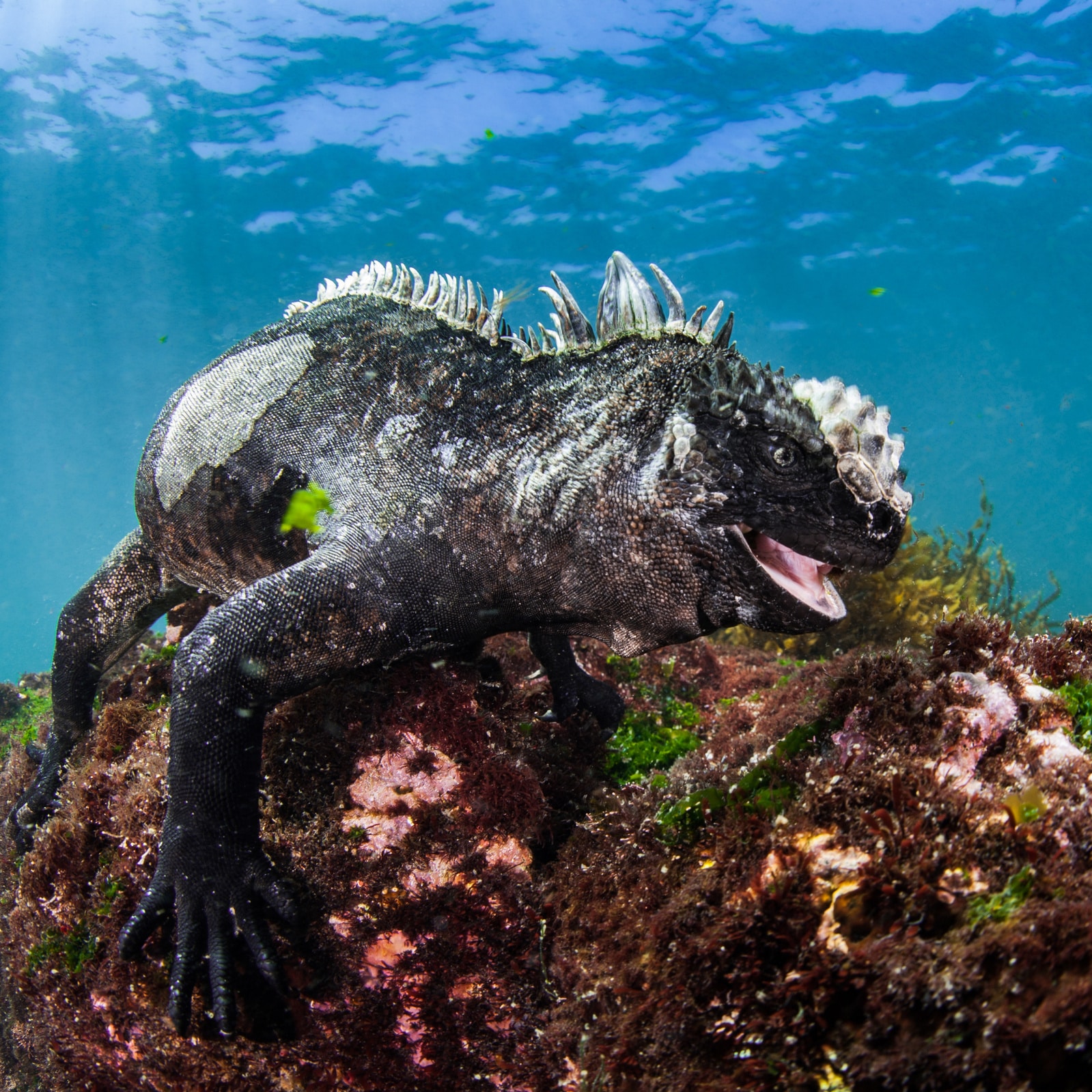
The Marine Iguana is unique among iguanas for its ability to forage in the ocean.
Native to the Galápagos Islands, these iguanas are excellent swimmers and feed primarily on algae.
They have dark, often black, coloration to absorb heat and regulate their body temperature after swimming in cold waters.
- Color: Dark, often black
- Habitat: Coastal regions of the Galápagos Islands
- Diet: Herbivorous, primarily algae
8. Lesser Antillean Iguana
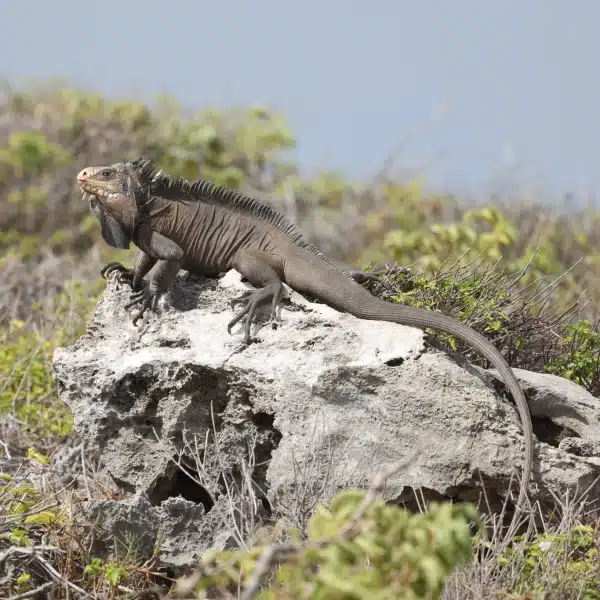
The Lesser Antillean Iguana is found in the Caribbean islands, specifically in the Lesser Antilles.
It is generally gray to pale green and is endangered due to habitat loss and hybridization with Green Iguanas.
The iguana is known for its peaceful nature.
- Color: Gray to pale green
- Habitat: Caribbean islands, Lesser Antilles
- Diet: Herbivorous, eating leaves, fruits, and flowers
9. Spiny-Tailed Iguana
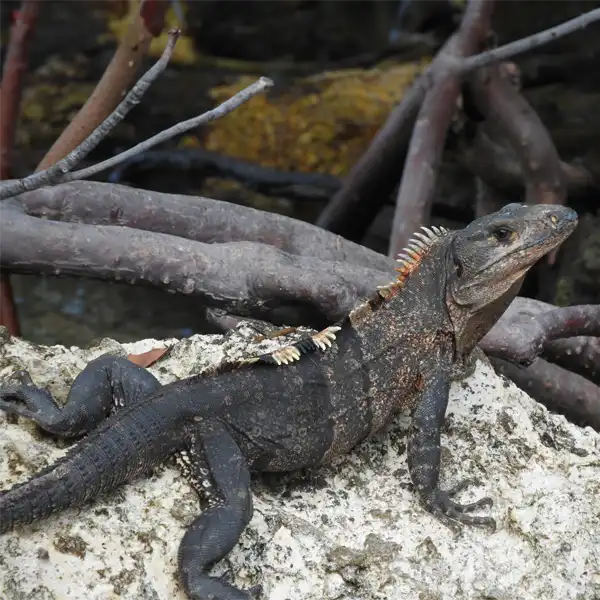
Spiny-tailed iguanas are known for the distinctive spines that run down their tails.
They are found in Central America and are highly adaptable, thriving in dry forests and urban areas.
They are smaller and more aggressive than many other iguana species.
- Color: Varies, often gray or brown
- Habitat: Dry forests, urban areas in Central America
- Diet: Omnivorous, eating insects, plants, and small animals
10. Black Iguana
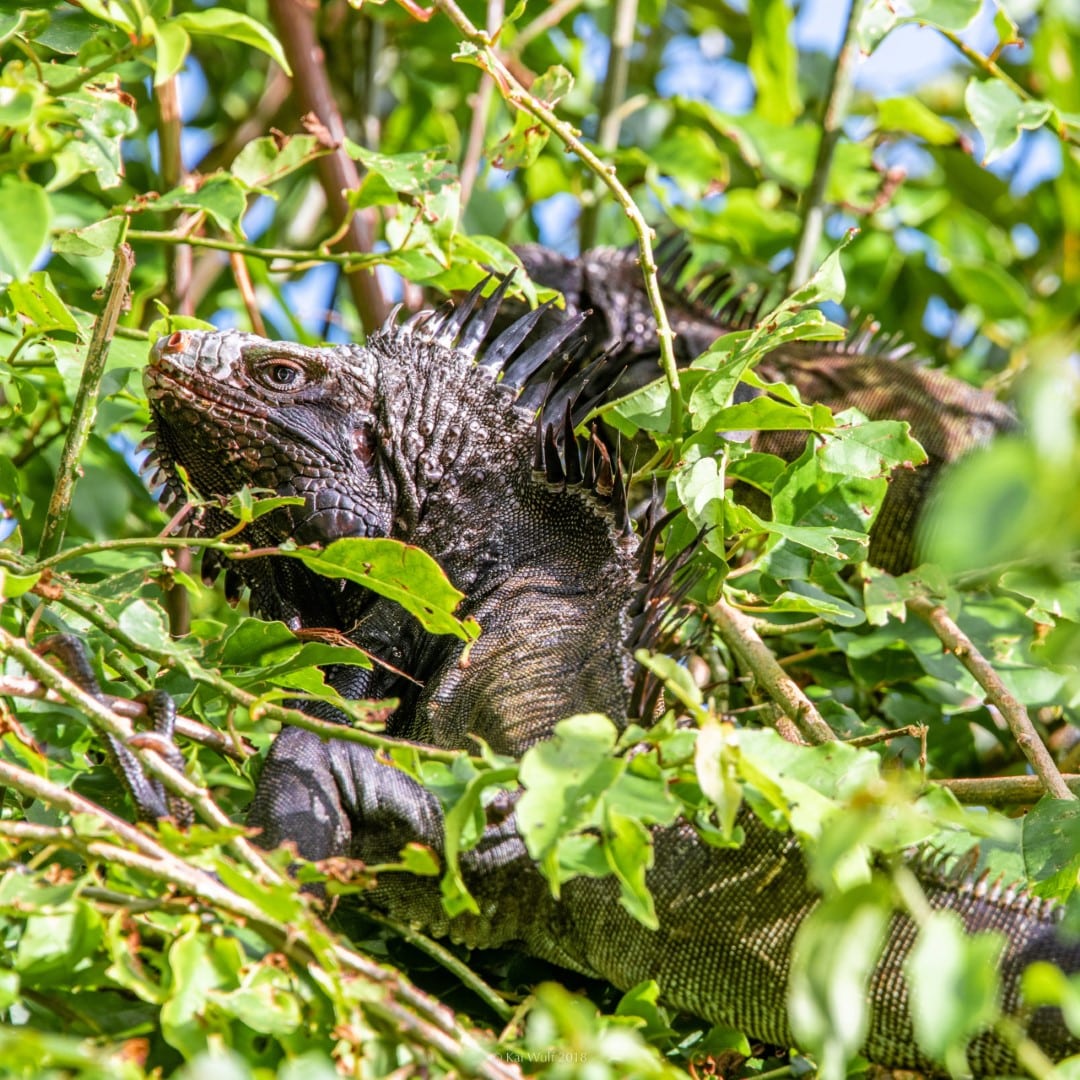
The Black Iguana, also known as the Black Spiny-Tailed Iguana, is native to Central America and is one of the fastest iguanas, known to run up to 21 miles per hour.
It has a black or dark gray coloration and is highly territorial, often found basking on rocks or in trees.
- Color: Black or dark gray
- Habitat: Central America, rocky areas
- Diet: Omnivorous, feeding on plants and insects
11. Cuban Rock Iguana
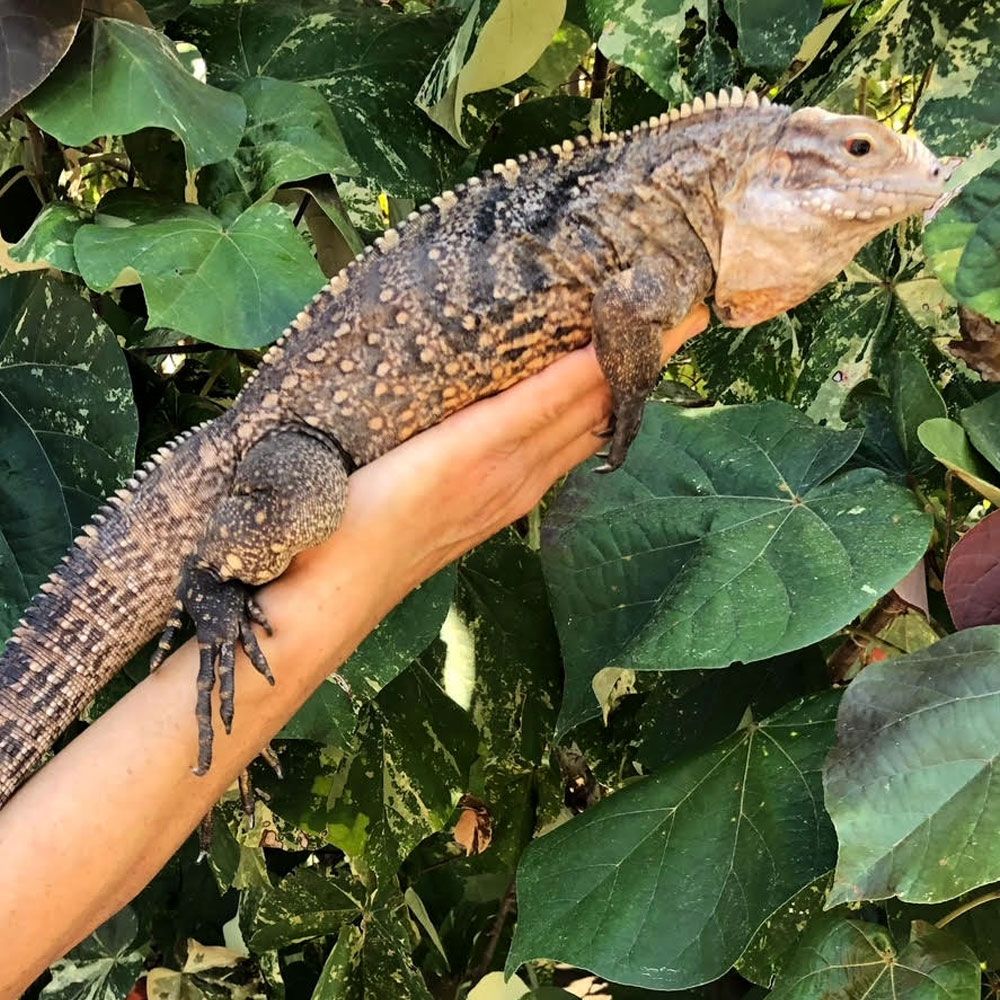
Cuban Rock Iguanas are large, robust iguanas found in Cuba.
They have rough, rock-like skin and are primarily herbivorous, feeding on various plants and fruits.
These iguanas are known for their strong territorial behavior and can be quite aggressive.
- Color: Dark gray to brown
- Habitat: Rocky areas of Cuba
- Diet: Herbivorous, feeding on plants and fruits
12. Rhinoceros Iguana
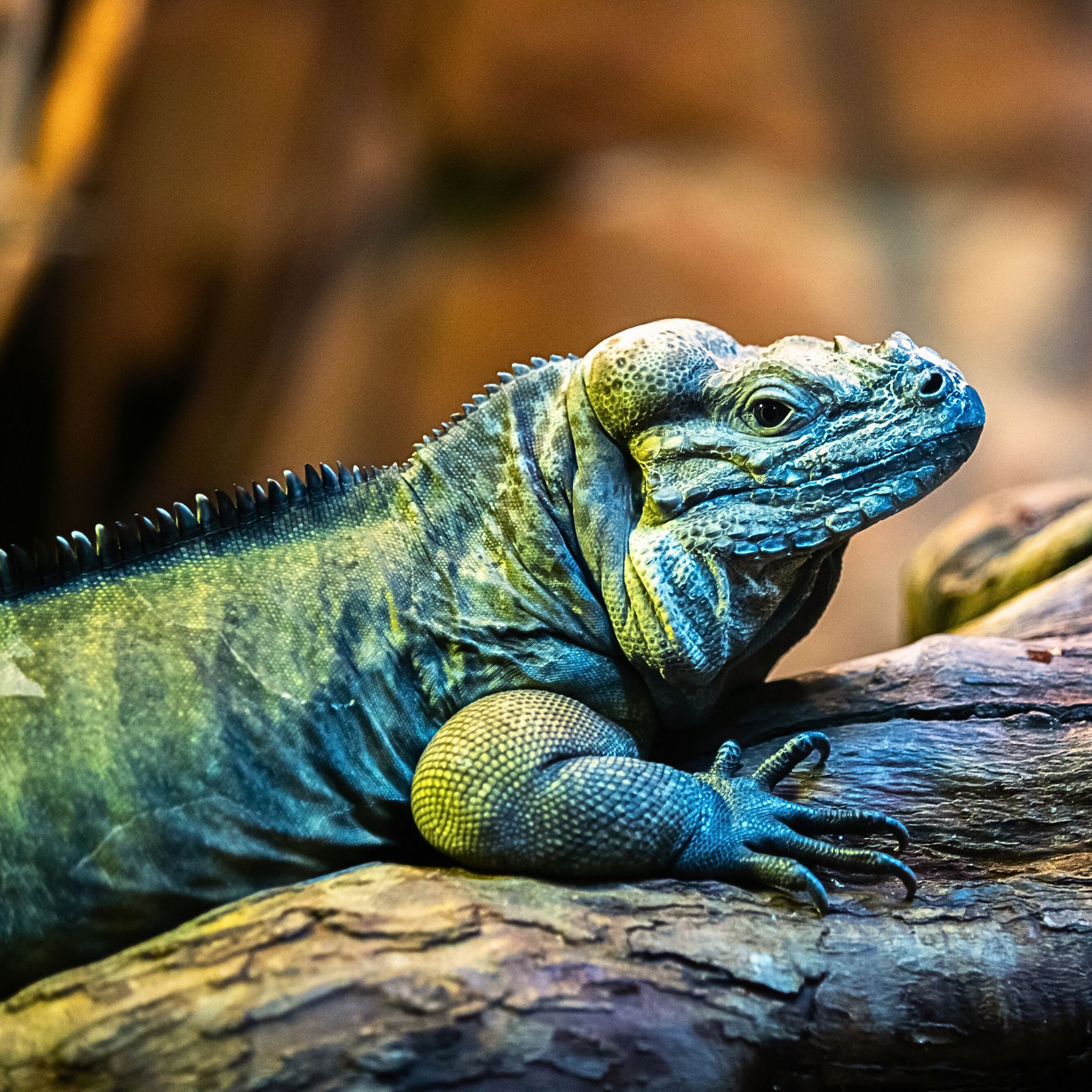
The Rhinoceros Iguana is named for the horn-like protrusions on its snout, resembling a rhinoceros.
Native to Hispaniola (Haiti and the Dominican Republic), these iguanas are large and robust, with a primarily herbivorous diet.
They are known for their docile nature in captivity.
- Color: Gray to olive green
- Habitat: Rocky areas, coastal regions
- Diet: Herbivorous, eating leaves, fruits, and flowers
13. Chuckwalla Iguana
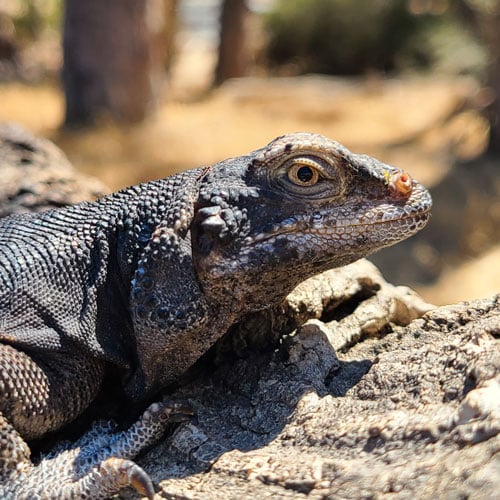
The Chuckwalla Iguana is found in the southwestern United States and northern Mexico.
It is known for its ability to inflate its body to wedge itself into rock crevices, protecting it from predators.
The iguana is herbivorous, feeding on desert vegetation.
- Color: Brown to gray
- Habitat: Desert regions, rocky outcrops
- Diet: Herbivorous, primarily desert plants
14. Jamaican Iguana
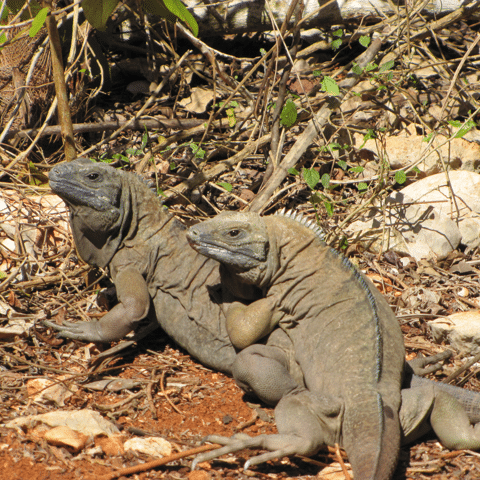
The Jamaican Iguana is critically endangered and was once considered extinct until it was rediscovered in 1990.
These iguanas are found only in the remote Hellshire Hills of Jamaica and are known for their gray-green coloration.
Conservation efforts are ongoing to protect this rare species.
- Color: Gray-green
- Habitat: Hellshire Hills, Jamaica
- Diet: Herbivorous, feeding on leaves, fruits, and flowers
15. Yucatan Spiny-Tailed Iguana
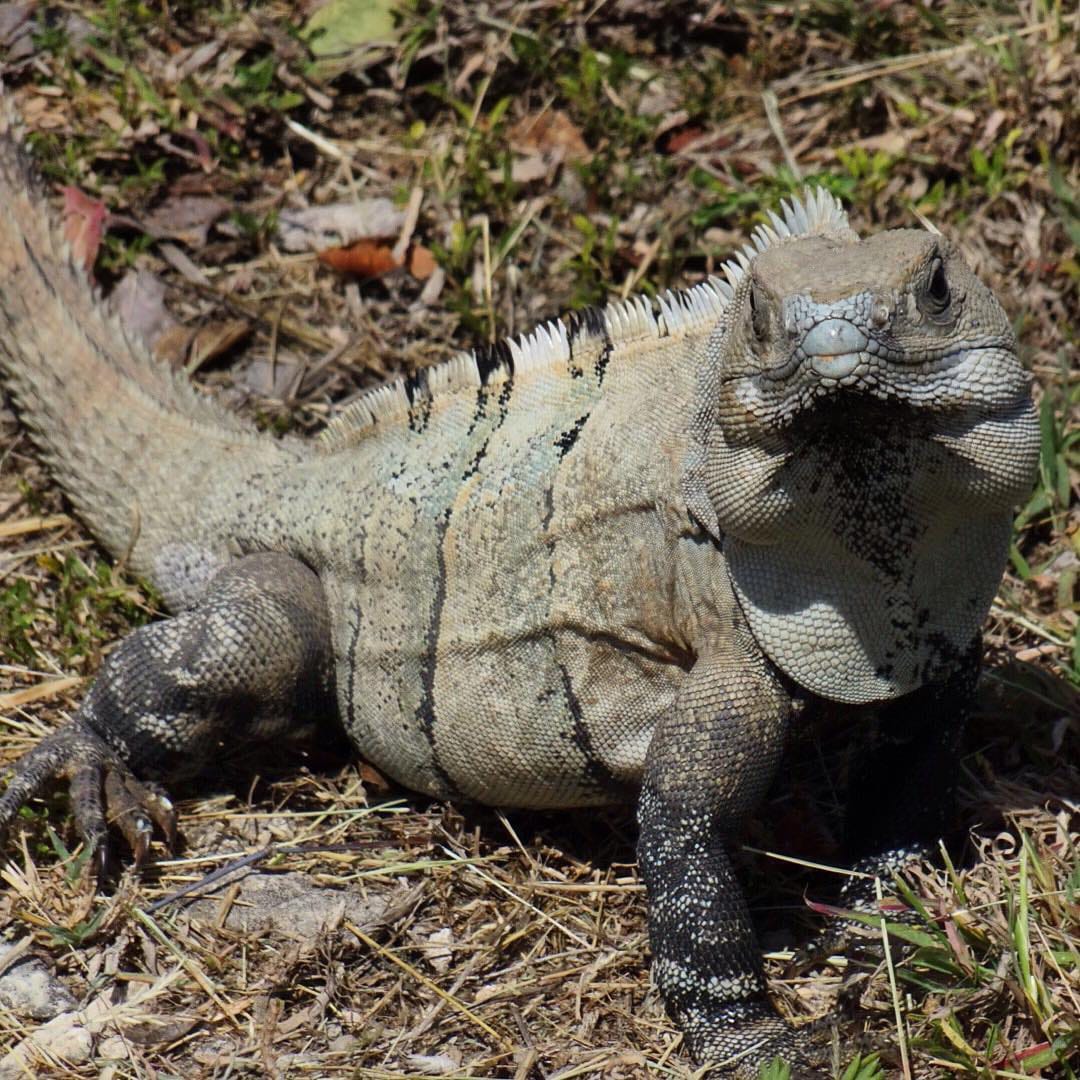
The Yucatan Spiny-Tailed Iguana is native to the Yucatan Peninsula in Mexico.
These iguanas are smaller and more agile than other species.
They have spiny tails and prefer rocky habitats.
They are omnivorous, feeding on a mix of plants and insects.
- Color: Gray to brown with spiny tail
- Habitat: Rocky areas of the Yucatan Peninsula
- Diet: Omnivorous, eating plants and insects
16. Grand Cayman Blue Iguana
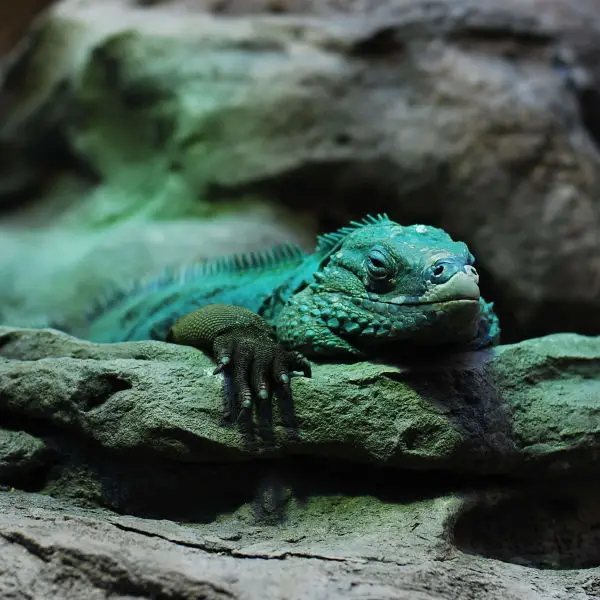
The Grand Cayman Blue Iguana is another name for the Blue Iguana, a critically endangered species native to Grand Cayman.
Known for their striking blue color, these iguanas are among the largest and longest-living species, often living over 40 years in the wild.
- Color: Bright blue
- Habitat: Dry forests, rocky areas of Grand Cayman
- Diet: Herbivorous, eating leaves, fruits, and flowers
17. Anegada Ground Iguana
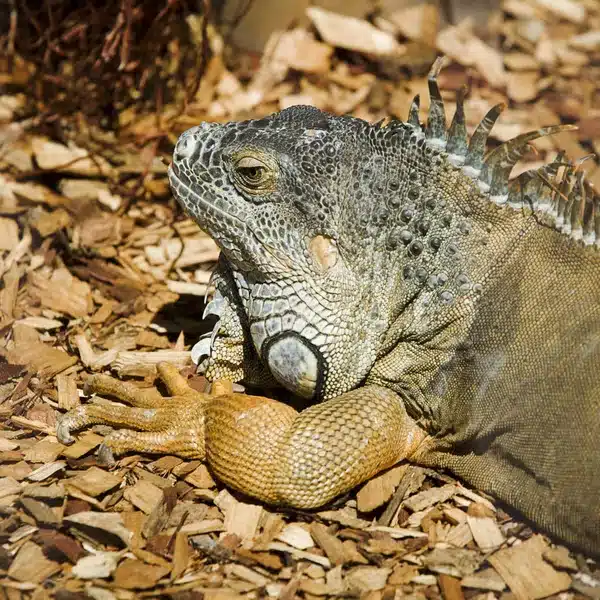
The Anegada Ground Iguana is native to Anegada Island in the British Virgin Islands.
It is critically endangered due to habitat destruction and introduced predators.
The iguana is known for its pale coloration and preference for dry, sandy habitats.
- Color: Pale gray to brown
- Habitat: Dry, sandy areas of Anegada Island
- Diet: Herbivorous, feeding on leaves, flowers, and fruits
18. Sinaloan Spiny-Tailed Iguana
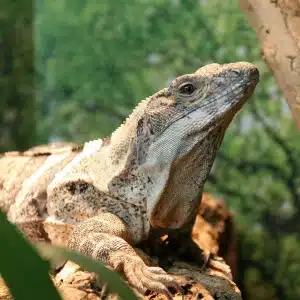
The Sinaloan Spiny-Tailed Iguana is found in the Sinaloa region of Mexico.
These iguanas are small, agile, and known for their spiny tails.
They thrive in rocky areas and are omnivorous, feeding on a diet of insects, plants, and small animals.
- Color: Gray to brown
- Habitat: Rocky regions of Sinaloa, Mexico
- Diet: Omnivorous, eating insects, plants, and small animals
19. Utila Spiny-Tailed Iguana
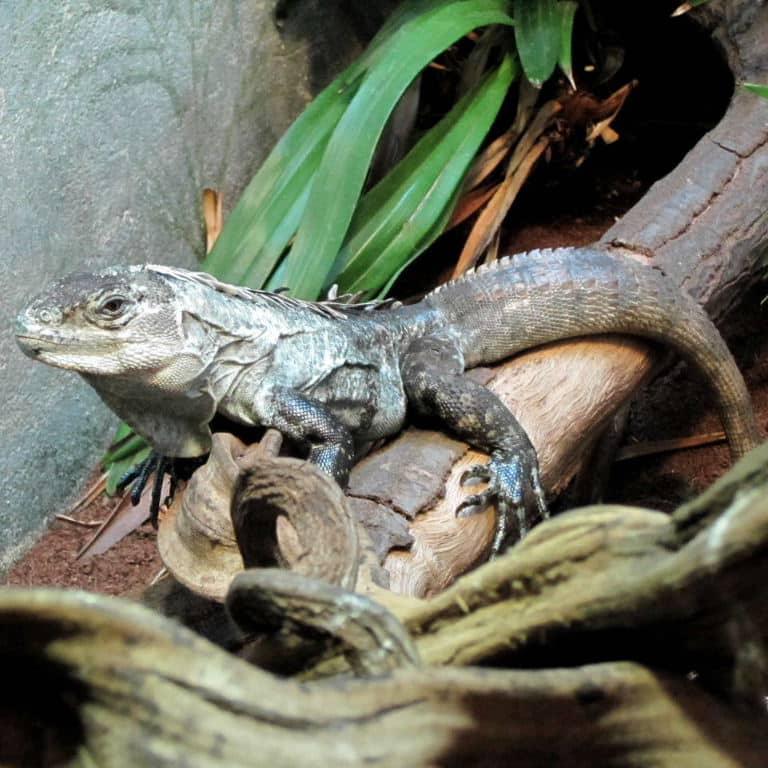
The Utila Spiny-Tailed Iguana is native to Utila Island in Honduras.
It is critically endangered and known for its distinctive black-and-white banded tails.
The iguana is primarily herbivorous and inhabits mangroves and coastal areas.
- Color: Gray with a black-and-white banded tail
- Habitat: Mangroves, coastal regions of Utila Island
- Diet: Herbivorous, feeding on leaves and fruits
20. Ctenosaura Iguana
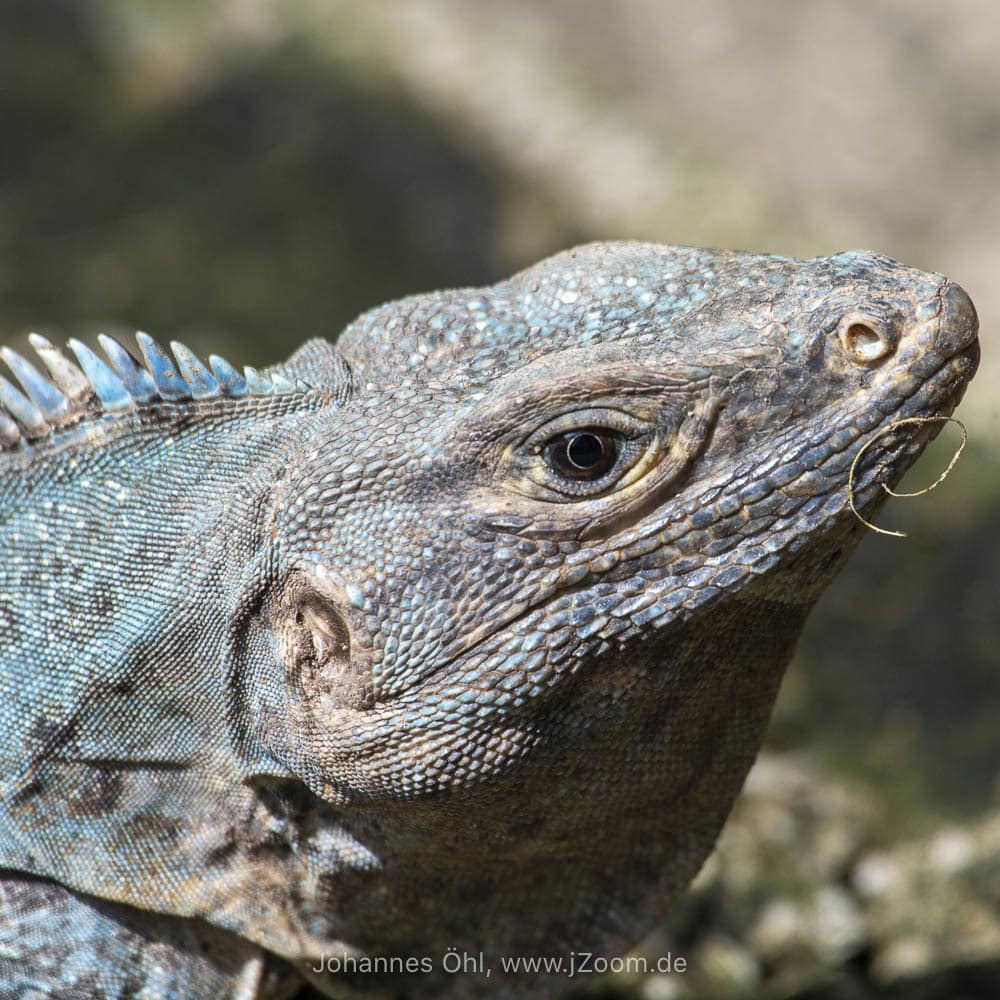
Ctenosaura iguanas, also known as spinytail iguanas, are found in Central America and Mexico.
They are known for their spiny tails and aggressive nature.
These iguanas are highly adaptable and thrive in various environments, from forests to urban areas.
- Color: Varies, often gray or brown
- Habitat: Forests, urban areas in Central America and Mexico
- Diet: Omnivorous, eating insects, plants, and small animals
21. Bahamas Rock Iguana
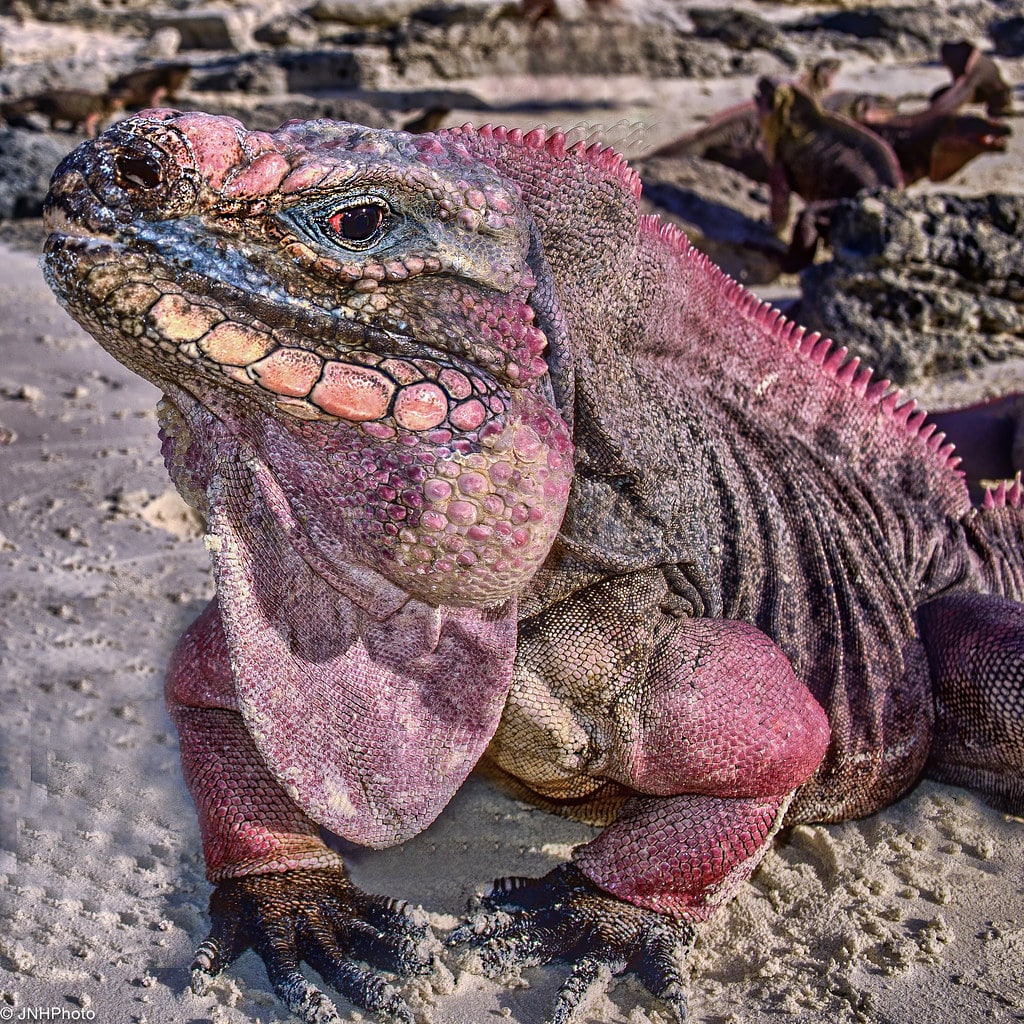
The Bahamas Rock Iguana is native to the Bahamas islands and is known for its distinctive coloration, including red, orange, and gray shades.
These iguanas are primarily herbivorous and are often found in coastal areas and rocky habitats.
- Color: Red, orange, gray
- Habitat: Coastal areas, rocky habitats in the Bahamas
- Diet: Herbivorous, feeding on leaves, fruits, and flowers
22. Tegucigalpa Iguana
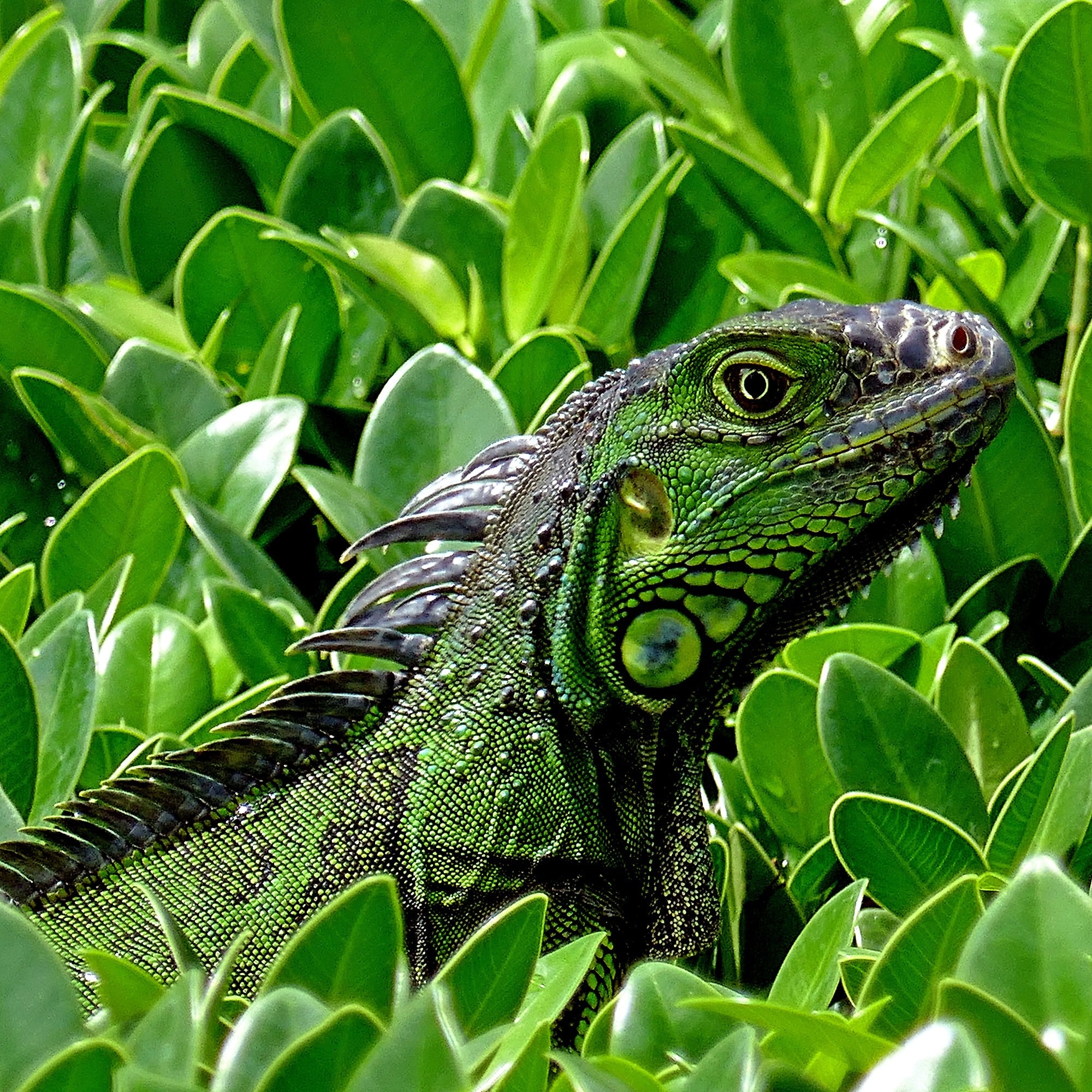
The Tegucigalpa Iguana is native to the Tegucigalpa region of Honduras.
This lesser-known species is characterized by its spiny tail and adaptable nature.
It inhabits rocky areas and dry forests, feeding on plants and small insects.
- Color: Gray to brown
- Habitat: Rocky areas, dry forests in Tegucigalpa
- Diet: Omnivorous, eating plants and insects
23. Isla Cerralvo Spiny-Tailed Iguana
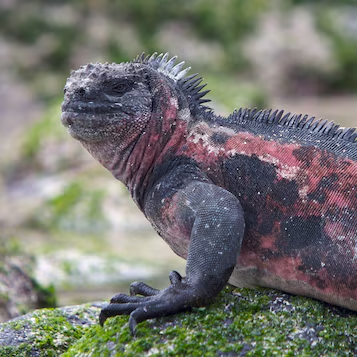
The Isla Cerralvo Spiny-Tailed Iguana is found on Isla Cerralvo in the Gulf of California.
These iguanas are small and agile, preferring rocky coastal areas.
They are known for their spiny tails and are primarily herbivorous.
- Color: Gray to brown
- Habitat: Rocky coastal areas of Isla Cerralvo
- Diet: Herbivorous, feeding on coastal vegetation
24. Cozumel Spiny-Tailed Iguana
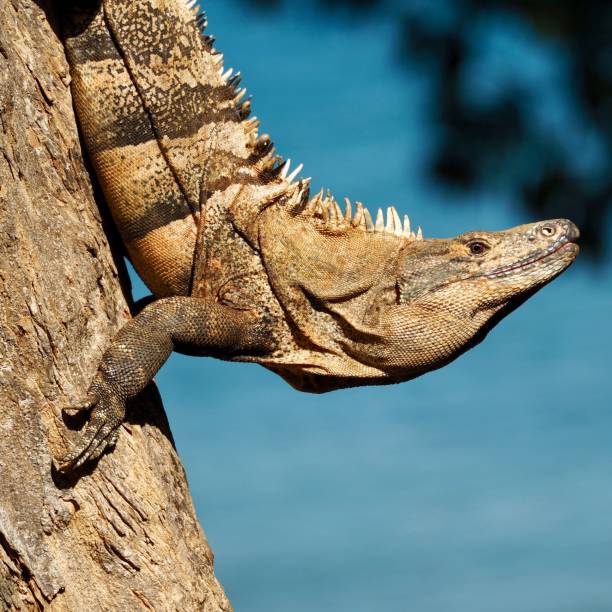
The Cozumel Spiny-Tailed Iguana is native to the island of Cozumel in Mexico.
It is distinguished by its spiny tails and dark coloration.
These iguanas are highly territorial and thrive in rocky habitats.
- Color: Dark gray to black
- Habitat: Rocky areas of Cozumel Island
- Diet: Omnivorous, eating plants and small animals
25. Santa Lucia Iguana
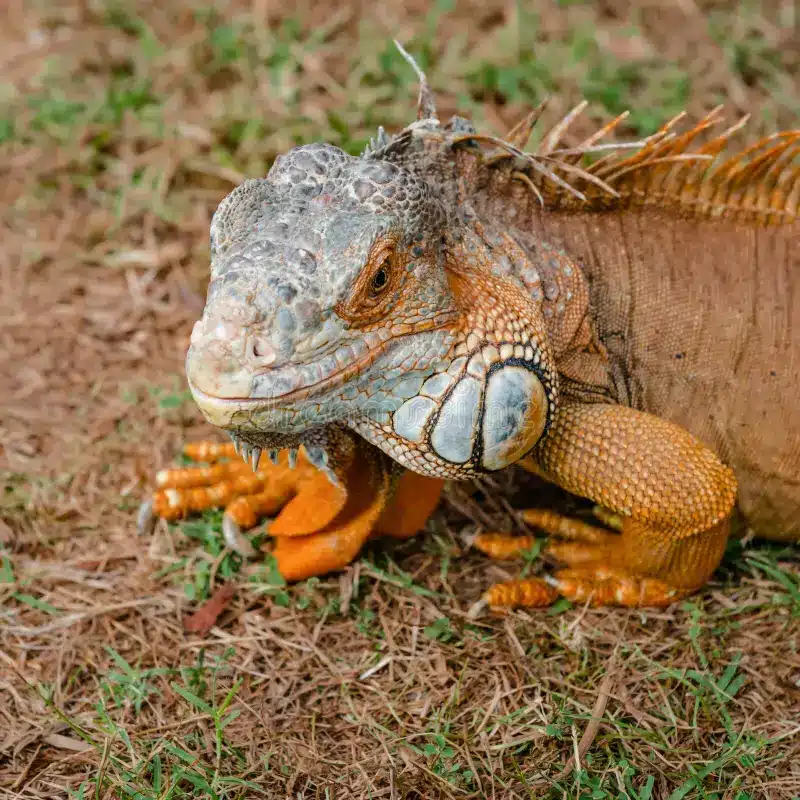
The Santa Lucia Iguana is a rare species found on the island of Saint Lucia in the Caribbean.
It is critically endangered due to habitat loss and is known for its unique coloration, which includes shades of green and blue.
- Color: Green with blue accents
- Habitat: Forested areas of Saint Lucia
- Diet: Herbivorous, feeding on leaves, fruits, and flowers
Conclusion
Iguanas are a diverse group of reptiles, each offering unique characteristics and playing a crucial role in their respective ecosystems.
From the towering Green Iguana to the rare Santa Lucia Iguana, understanding these different types can deepen our appreciation for these fascinating creatures.
Whether you’re an enthusiast, a researcher, or just curious about iguanas, knowing more about these species helps conserve and preserve their natural habitats.

